
Paul Behrens (1893–1984) was a clockmaker in Lübeck in northern Germany.

Paul Behrens (1893–1984) was a clockmaker in Lübeck in northern Germany.
Behrens was the son of Paul Behrens sr, who himself had been a clockmaker in Lübeck. Paul Behrens jr took over the management of the family company ("Uhrenhaus Behrens") in 1936 and remained at its helm until 1975.
Behrens is best known for his reconstruction of the peal of bells of St. Mary's Church in Lübeck and his creation of the new Astronomical Clock in the same church (the original peal of bells and Astronomical Clock had been destroyed in the Bombing of Lübeck in World War II). He also ensured the financing of these initiatives and was able to give the completed clock to the church in 1967.
In the same year, the city of Lübeck awarded Paul Behrens the Ehrenplakette of the Senate, one of the honours in the gift of the Senate of Lübeck.
Hans-Joachim Thilo, "Predigt anläßlich der Trauerfeier für Paul Behrens", in Rolf Saltzwedel (Editor), St Marien Jahrbuch 1987 des St. Marien-Bauvereins, 1987

St. Mary's Church, or formally the Basilica of the Assumption of the Blessed Virgin Mary, is a Brick Gothic Catholic church located in central Gdańsk, Poland. With its volume between 185,000 m3 and 190,000 m3 it is currently one of the two or three largest brick churches in the world. Only San Petronio Basilica in Bologna, comprising 258,000 m3 is larger, Munich Frauenkirche and Ulm Minster also comprise 185,000 to 190,000 m3.
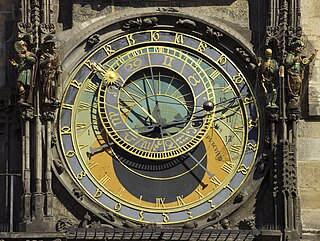
An astronomical clock, horologium, or orloj is a clock with special mechanisms and dials to display astronomical information, such as the relative positions of the Sun, Moon, zodiacal constellations, and sometimes major planets.

The Peter and Paul Cathedral is a Russian Orthodox cathedral located inside the Peter and Paul Fortress in St. Petersburg, Russia. It is the first and oldest landmark in St. Petersburg, built between 1712 and 1733 on Hare Island along the Neva River. Both the cathedral and the fortress were originally built under Peter the Great and designed by Domenico Trezzini. The cathedral's bell tower is the world's tallest Orthodox bell tower. Since the belfry is not standalone, but an integral part of the main building, the cathedral is sometimes considered the highest Orthodox Church in the world. There is another Cathedral of Saints Peter and Paul Church in St. Petersburg, located in Petergof.

St Magnus Cathedral dominates the skyline of Kirkwall, the main town of Orkney, a group of islands off the north coast of mainland Scotland. It is the oldest cathedral in Scotland, and the most northerly cathedral in the United Kingdom, a fine example of Romanesque architecture built for the bishops of Orkney when the islands were ruled by the Norse Earls of Orkney. It is owned not by the church, but by the burgh of Kirkwall as a result of an act of King James III of Scotland following Orkney's annexation by the Scottish Crown in 1468. It has its own dungeon.
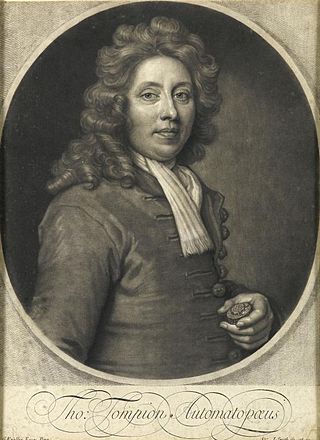
Thomas Tompion, FRS (1639–1713) was an English clockmaker, watchmaker and mechanician who is still regarded to this day as the "Father of English Clockmaking". Tompion's work includes some of the most historic and important clocks and watches in the world, and can command very high prices whenever outstanding examples appear at auction. A plaque commemorates the house he shared on Fleet Street in London with his equally famous pupil and successor George Graham.

The Lübeck Marienkirche is a medieval basilica in the city centre of Lübeck, Germany. Built between 1265 and 1352, the church is located on the highest point of Lübeck's old town island within the Hanseatic merchants' quarter, which extends uphill from the warehouses on the River Trave to the church. As the main parish church of the citizens and the city council of Lübeck, it was built close to the town hall and the market.

Gillett & Johnston was a clockmaker and bell foundry based in Croydon, England from 1844 until 1957. Between 1844 and 1950, over 14,000 tower clocks were made at the works. The company's most successful and prominent period of activity as a bellfounder was in the 1920s and 1930s, when it was responsible for supplying many important bells and carillons for sites across Britain and around the world.

The Wells Cathedral clock is an astronomical clock in the north transept of Wells Cathedral, England. The clock is one of the group of famous 14th– to 16th–century astronomical clocks to be found in the West of England. The surviving mechanism, dated to between 1386 and 1392, was replaced in the 19th century, and was eventually moved to the Science Museum in London, where it continues to operate. The dial represents the geocentric view of the universe, with the Sun and Moon revolving round a central fixed Earth. It may be unique in showing a philosophical model of the pre-Copernican universe.

Thwaites & Reed has been in continuous manufacture since its foundation and claims to be the oldest clock manufacturing company in the world. Geoffrey Buggins MBE, the last of the original family clockmakers, saw drawings of Thwaites clocks dating back to 1610. These drawings and other early records prior to 1780 went missing but other records from that date are stored with the London Metropolitan Archives. Further records are stored by Thwaites & Reed up to present day.

The Cathedral of St Michael and St George is the home of the Anglican Diocese of Grahamstown in Makhanda in the Eastern Cape Province of South Africa. It is the episcopal seat of the Bishop of Grahamstown. The cathedral is located on Church Square and has the tallest spire in South Africa 176 feet (54 m). The cathedral is dedicated to St Michael and St George and celebrates its patronal festival on the Sunday closest to Michaelmas.
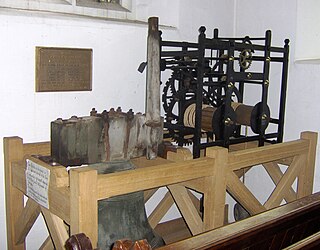
The Bilbie family were bell founders and clockmakers based initially in Chew Stoke, Somerset and later at Cullompton, Devon in south-west England from the late 17th century to the early 19th century.
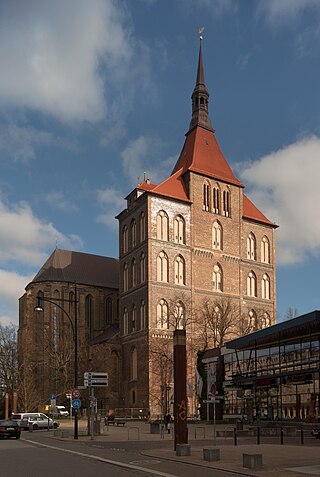
St. Mary's Church, Rostock, in German Marienkirche, is the biggest of three town churches found in the Hanseatic city of Rostock, in northern Germany. The other two are St. Peter's (Petrikirche) and St. Nicholas (Nikolaikirche). A fourth, St. James' (Jakobikirche), was heavily damaged during the Second World War and subsequently demolished. St. Mary's was designated in 1265 as the main parish church. Since the Protestant Reformation in 1531, it houses a congregation of the Evangelical Lutheran State Church of Mecklenburg.

Benjamin Lewis Vulliamy was a clockmaker, active in 18th and 19th century Britain. He succeeded his father Benjamin Vulliamy as head of the firm and Clockmaker to the Crown.
Hans Düringer was a clockmaker from Nuremberg in Germany who died 1477 in Rostock. His most famous works are
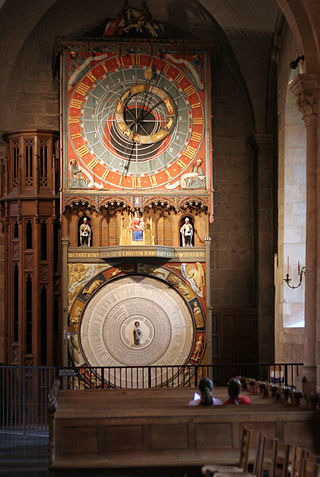
Lund astronomical clock, occasionally and at least since the 16th century referred to as Horologium mirabile Lundense, is a 15th-century astronomical clock in Lund Cathedral. Mentioned in written sources for the first time in 1442, it was probably made and installed sometime around 1423–1425, possibly by Nikolaus Lilienfeld. It is part of a group of related medieval astronomical clocks found in the area around the south Baltic Sea. In 1837 the clock was dismantled. Between 1909 and 1923, it was restored by the Danish clockmaker Julius Bertram-Larsen and the Swedish architect responsible for the upkeep of the cathedral, Theodor Wåhlin. From the old clock, the face of the clock as well as the mechanism, which was largely replaced during the 18th century, was salvaged and re-used. The casing, most parts of the calendar which occupies the lower part, and the middle section were made anew.

The Rostock astronomical clock is a fifteenth-century astronomical clock in St. Mary's Church, Rostock.
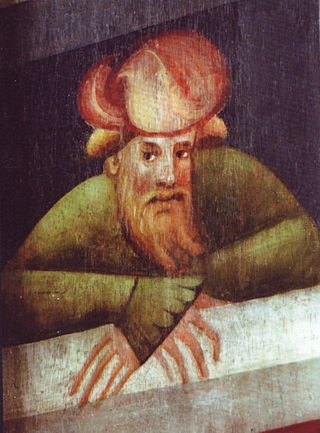
Nikolaus Lilienfeld was a German engineer and clockmaker of the late 14th and early 15th centuries.

The Münster astronomical clock is an astronomical clock in Münster Cathedral in Münster, Germany.

The astronomical clock of St. Nicholas Church, Stralsund is a 14th century monumental astrolabe clock. It was probably damaged in the 16th century, and has not worked since then. It is the only clock of its kind to have been preserved almost entirely in its original condition. The clockwork and the indications have not been restored.